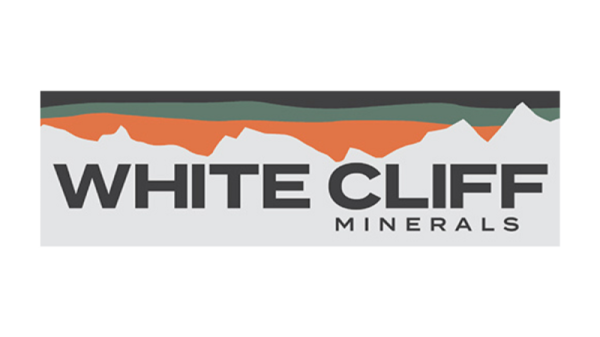Fair Value Gap: Deep Dive Into Market Evaluation
The terms “fair value gap” and “mark-to-market” are related concepts often used in the context of accounting and finance, particularly in the valuation of financial assets and liabilities. Nevertheless, they aren’t directly interchangeable, and their meanings are somewhat distinct:
Key takeaways
A fair value gap (FVG) is the variance between an asset or liability’s recorded value and its current market-based fair value.
Mark-to-market (MTM) is an accounting method that values assets and liabilities based on their current market prices, ensuring real-time financial reporting accuracy.
What’s interesting, FVG and MTM aren’t directly interchangeable.
Let’s start with the fair value gap.
The fair value gap refers to the difference between the current fair market value of a financial asset or liability and its recorded value on a company’s balance sheet.
This gap can arise for various reasons, including changes in market conditions, fluctuations in interest rates, shifts in the economy, or changes in the financial instrument’s underlying fundamentals.
Mark-to-market
Mark-to-market (MTM) is an accounting method used to value financial assets and liabilities at their current market prices. Under this method, a company periodically adjusts the carrying value of its assets and liabilities on the balance sheet to reflect their current market values.
This means the values are “marked” to the prevailing market conditions at the reporting date. It is commonly used for assets like stocks and bonds.
The connection between the fair value gap and mark-to-market lies in the fact that mark-to-market accounting is a technique often used to address or account for the fair value gap.
When a company uses mark-to-market accounting, it regularly revalues its financial assets and liabilities to reflect its current fair market values. This helps ensure that the financial statements provide a more accurate representation of the company’s financial position, as it reflects the most up-to-date market conditions.
Valuation techniques
It is a good idea to gather more information on valuation techniques.
Valuation techniques are methods used to determine the intrinsic or fair value of assets, businesses, or financial instruments.
These techniques are essential in various fields, including finance, investing, mergers and acquisitions, and accounting, as they help individuals and organizations make informed decisions about the worth of assets and investments. Here are some common valuation techniques:
Market-based valuation:
Comparative market analysis (CMA): This technique is commonly used in real estate to determine the value of a property by comparing it to similar properties that have recently been sold in the same area. CMA relies on market prices as indicators of value.
Market multiples: In the context of stocks and businesses, market multiples compare financial metrics like price-to-earnings (P/E), price-to-sales (P/S), or price-to-book (P/B) ratios of a company to those of comparable companies in the same industry. This approach is known as relative valuation.
Income-based valuation:
Discounted cash flow (DCF): DCF is a widely used technique estimates the present value of future cash flows generated by an asset or business. It involves forecasting cash flows and discounting them back to their present value using a discount rate.
Dividend discount model (DDM): DDM is used to value stocks by estimating the present value of expected future dividend payments. It is particularly applicable to dividend-paying companies.
Asset-based valuation:
Book value:
Book value represents the net value of a company’s assets after subtracting its liabilities. It is an accounting-based valuation method and may not reflect the true market value of assets.
Liquidation value: Liquidation value estimates the value of a business or its assets if they were sold in a forced liquidation scenario, typically at a discount to their market values.
Option pricing models:
Black-Scholes model: This model is primarily used to value financial options, such as call and put options on stocks. It calculates the theoretical option price based on factors like the underlying asset’s price, the option’s strike price, time to expiration, and implied volatility.
Market transactions:
Recent transactions of similar assets can also influence valuations. For example, the sale of a similar business or property in the market can provide a benchmark for determining the value of another similar asset.
Real options valuation:
Real options valuation extends the concept of options pricing to real-world investment decisions. It is used to assess the value of strategic opportunities or flexibility in business decisions, such as the option to expand or abandon a project.
Intangible asset valuation:
Valuing intangible assets like patents, trademarks, and intellectual property often involves using specialized techniques, including income-based methods or the relief from royalty method.
Market price vs. book value
Market price and book value are two essential metrics used in financial analysis to evaluate the worth of a company’s shares. These metrics provide different perspectives on a company’s financial health and the market’s perception of its value.
Market price, often referred to as the market capitalization or stock price, represents the current price at which a company’s shares are trading in the open market.
It is determined by the supply and demand dynamics in the stock market and can fluctuate frequently throughout a trading day. Market price is influenced by a wide range of factors, including company performance, investor sentiment, economic conditions, and news events.
Investors and traders use market price to assess the market’s collective opinion about a company’s prospects. A higher market price typically indicates that investors have a positive view of the company, while a lower market price suggests a negative sentiment.
Book value
Book value, on the other hand, is a fundamental accounting metric that represents the net asset value of a company. It is calculated by subtracting a company’s total liabilities from its total assets. In other words, it reflects the value of a company’s assets that would be left for shareholders if all debts and obligations were paid off.
Book value is a useful metric for assessing the intrinsic value of a company’s shares. When the market price of a company’s stock is lower than its book value per share, it may be considered undervalued, indicating that investors can purchase shares for less than the company’s net asset value. Conversely, when the market price is higher than the book value per share, it suggests the stock is trading at a premium, possibly due to high investor expectations for future growth.
It’s important to note that book value doesn’t consider intangible assets, such as brand value or intellectual property, which can be significant in some industries. Additionally, book value is based on historical cost accounting, which may not reflect the current market value of assets, especially in industries with rapidly changing asset values, like technology companies.
In summary, the fair value gap represents the difference between the recorded value and the current fair market value of financial assets or liabilities. At the same time, mark-to-market is an accounting method used to adjust those values to reflect current market conditions.
The post Fair Value Gap: Deep Dive Into Market Evaluation appeared first on FinanceBrokerage.

































